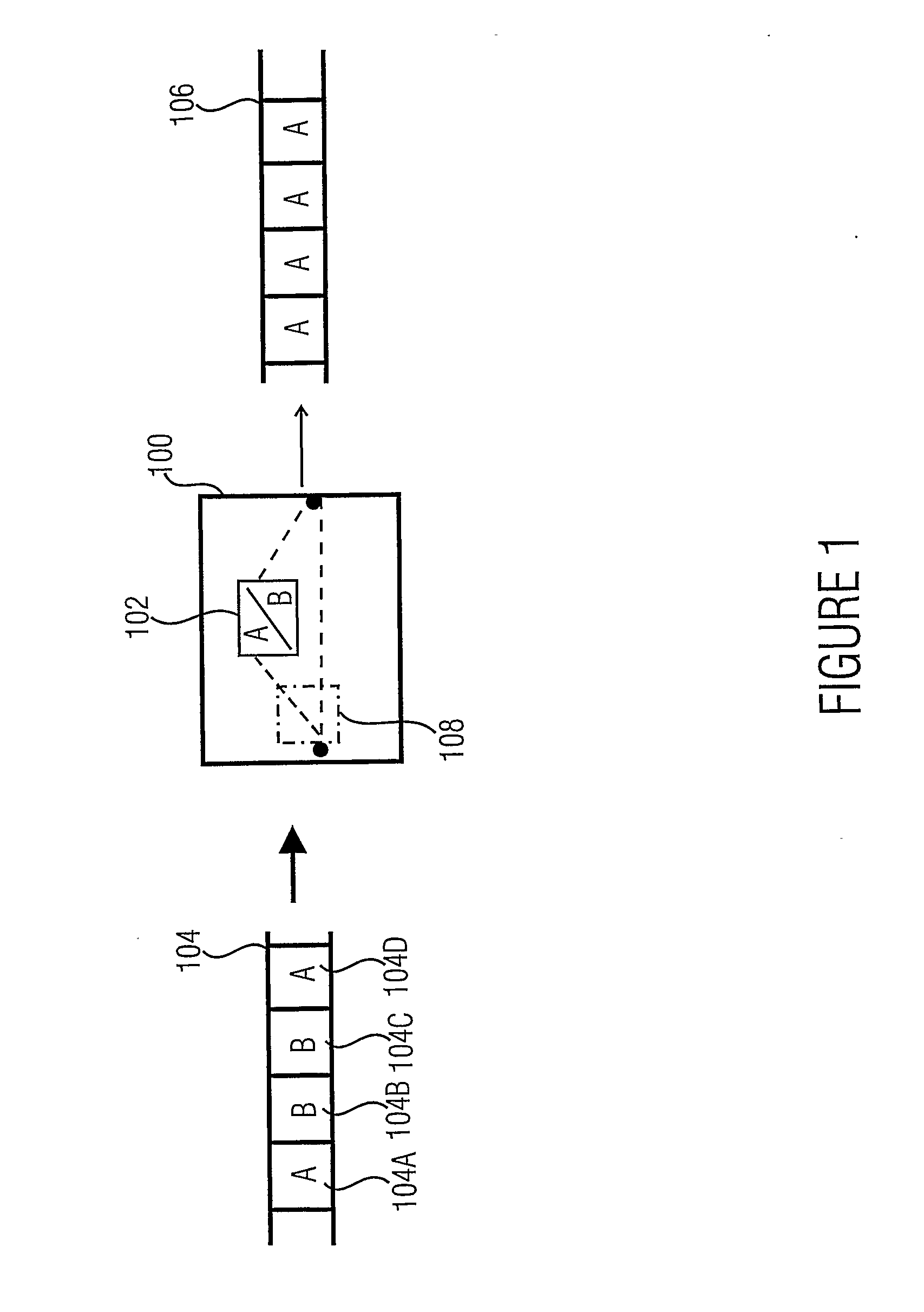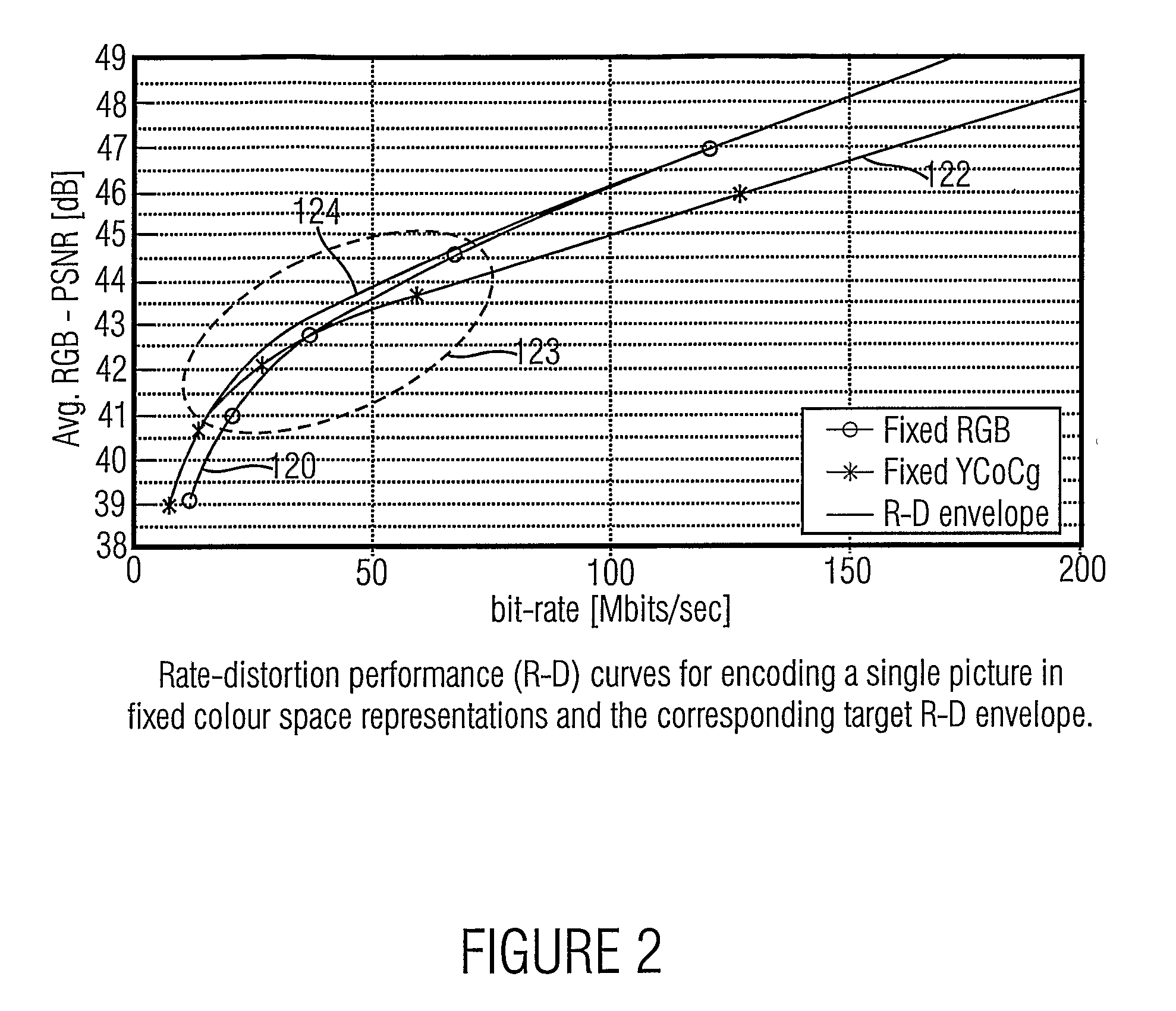Picture coding using adaptive color space transformation
a color space transformation and color space technology, applied in the field of picture coding using adaptive color space transformation, can solve the problems of lossy compression, insufficient or acceptable file-size reduction for the desired application, and reduce the quality of compressed pictures, so as to achieve the same perceptual quality and lower bit rate
- Summary
- Abstract
- Description
- Claims
- Application Information
AI Technical Summary
Benefits of technology
Problems solved by technology
Method used
Image
Examples
Embodiment Construction
[0040]FIG. 1 shows an inventive decoder 100. The decoder 100 is having a color-space transformer 102 that is operative to transform a picture block from a first color-space-representation (A) to a second color-space-representation (B) and vice versa. The decoder is used within the reconstruction of a picture or a movie that is represented in a representation having a first picture block and a second picture block within pictures, wherein the picture blocks carry their picture information in a first color-space-representation (A) or in a second color-space-representation (B). The decoder 100 receives a bit stream 104 comprising several picture blocks 104A to 104D as an input, wherein the picture blocks 104A to 104D are included within the bit stream 104 in different color-space-representations A or B.
[0041]The color-space transformer 102 within the decoder 100 receives selected picture blocks to convert them from their original color-space-representation to a desired color-space-repr...
PUM
 Login to View More
Login to View More Abstract
Description
Claims
Application Information
 Login to View More
Login to View More - R&D
- Intellectual Property
- Life Sciences
- Materials
- Tech Scout
- Unparalleled Data Quality
- Higher Quality Content
- 60% Fewer Hallucinations
Browse by: Latest US Patents, China's latest patents, Technical Efficacy Thesaurus, Application Domain, Technology Topic, Popular Technical Reports.
© 2025 PatSnap. All rights reserved.Legal|Privacy policy|Modern Slavery Act Transparency Statement|Sitemap|About US| Contact US: help@patsnap.com



